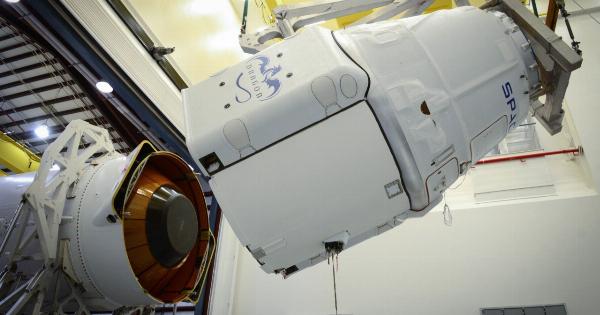Hyper-core paralysis is a neurological condition that affects the core muscles of the body, resulting in significant impairment of movement and function.
Recent advancements in the treatment of hyper-core paralysis have provided new hope for patients suffering from this debilitating condition. This article explores the latest developments in hyper-core paralysis treatment, including innovative therapies, surgical interventions, and emerging technologies.
1. Deep Brain Stimulation
One of the most promising treatments for hyper-core paralysis is deep brain stimulation (DBS). This surgical procedure involves implanting electrodes in specific areas of the brain responsible for movement control.
These electrodes deliver electrical impulses that help regulate abnormal brain activity and restore motor function. Recent studies have shown significant improvements in motor symptoms and quality of life for patients who undergo DBS for hyper-core paralysis.
2. Virtual Reality Rehabilitation
Virtual reality (VR) has emerged as a powerful tool in the rehabilitation of individuals with hyper-core paralysis. VR rehabilitation programs allow patients to engage in immersive experiences that simulate real-life movements and activities.
By interacting with virtual environments, patients can improve their motor skills, coordination, and balance. The use of VR technology in hyper-core paralysis treatment has shown promising results in restoring functional abilities and enhancing patient motivation during therapy sessions.
3. Stem Cell Therapy
Stem cell therapy holds great potential for the treatment of hyper-core paralysis. Recent advancements in stem cell research have enabled scientists to generate specialized cells that can replace damaged or lost neurons in the core muscles.
These transplanted cells have the ability to integrate into the existing neural networks and promote functional recovery. While still in the early stages of development, stem cell therapy shows promise in restoring movement and improving the overall quality of life for individuals with hyper-core paralysis.
4. Neurorehabilitation Robotics
Neurorehabilitation robotics are robotic devices designed to assist individuals with hyper-core paralysis in regaining movement and functionality.
These devices use a combination of sensors, actuators, and computer algorithms to provide tailored therapy sessions. Recent advancements in neurorehabilitation robotics have allowed for more precise and individualized treatments, leading to better outcomes for patients with hyper-core paralysis.
5. Focused Ultrasound Therapy
Focused ultrasound therapy is a non-invasive procedure that uses ultrasound waves to target specific areas of the brain associated with hyper-core paralysis.
By delivering focused beams of ultrasound energy, this therapy can modulate brain activity and restore motor function. Recent studies have shown promising results in reducing core muscle rigidity and improving overall motor symptoms in individuals with hyper-core paralysis.
6. Neural Interfaces
Neural interfaces, such as brain-computer interfaces (BCIs), offer a novel approach to treating hyper-core paralysis.
These devices establish a direct communication pathway between the brain and external devices, enabling individuals with hyper-core paralysis to control assistive technologies using their thoughts. Recent developments in neural interface technology have improved the accuracy, speed, and reliability of these systems, opening up new possibilities for individuals with hyper-core paralysis to regain independence and improve their quality of life.
7. Gene Therapy
Gene therapy holds promise as a potential treatment for hyper-core paralysis.
By targeting specific genes associated with the condition, scientists aim to correct genetic mutations or enhance the production of proteins necessary for proper neural function. Recent advancements in gene editing techniques, such as CRISPR-Cas9, have paved the way for more precise and effective gene therapies.
Although still in the early stages of development, gene therapy offers a potential future alternative for individuals with hyper-core paralysis.
8. Neuromodulation
Neuromodulation techniques, such as transcranial magnetic stimulation (TMS) and transcranial direct current stimulation (tDCS), have shown promise in alleviating motor symptoms in hyper-core paralysis.
These non-invasive procedures involve the application of magnetic fields or weak electrical currents to specific areas of the brain to modulate neural activity. Recent studies have reported improvements in muscle strength, coordination, and motor control following neuromodulation interventions for hyper-core paralysis.
9. Assistive Technologies
Advancements in assistive technologies have significantly improved the quality of life for individuals with hyper-core paralysis.
Devices such as exoskeletons, wheelchair-mounted robotic arms, and voice-activated home automation systems provide greater independence and mobility. Recent developments in assistive technologies have focused on enhancing usability, comfort, and customization to meet the specific needs of individuals with hyper-core paralysis.
10. Collaborative Care Approach
Recent developments in hyper-core paralysis treatment emphasize the importance of a collaborative care approach that involves a multidisciplinary team of healthcare professionals, including neurologists, physical therapists, occupational therapists, and psychologists. This integrated approach ensures comprehensive evaluation, personalized treatment plans, and ongoing support for individuals with hyper-core paralysis.



























